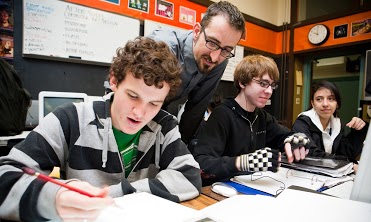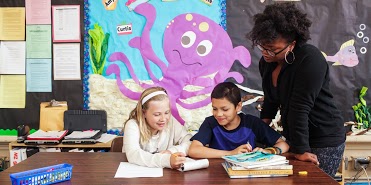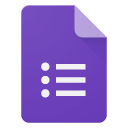Why give students feedback? Link to this section
Research consistently shows that feedback leads to significant gains in learning and achievement across all subject areas, skills levels, and ages of students (Black & Wiliam, 1998).
For a student to benefit from feedback, they must know what the performance goal is, how their current performance relates to that goal, and how to act to close the gap between the two (Sadler, 1989).

More resources on feedback:
Qualities of good feedback Link to this section
Nicol and Macfarlane-Dick (2006) extensively reviewed the research on feedback and outlined seven principles of good feedback practice. These seven principles are:
 Communicate and clarify what good performance is, preferably through exemplars
Communicate and clarify what good performance is, preferably through exemplars- Facilitate the development of self-assessment and reflection skills through structured reflective tasks that ask students to identify criteria that apply to their work and to judge their work against that criteria
- Deliver high quality information to students about their learning
- Encourage teacher and peer dialogue around learning
- Encourage self-esteem and positive motivational beliefs
- Provide opportunities to revise work to demonstrate growth
- Provide information to teachers to help shape teaching
Actionable characteristics of good feedback: Link to this section
- Descriptive comments are more effective than scores (Brookhart, 2017)
- Focus your feedback on the task, not the learner (Shute, 2008)
- When possible, give feedback on the learning and progress, rather than the performance itself (Shute, 2008)
- Consider giving one positive comment and one suggestion for improvement that encourages the learner to think (Brookhart, 2017)
- Feedback may utilize multiple rounds with revision in between, so start with larger structural issues and then move down more granularly after big issues are resolved (Brookhart, 2017)
Putting these principles & characteristics to work will look different for each teacher and perhaps even with each student, but one of the most common student complaints about received feedback is not understanding how to apply the feedback to future work (Brookhart, 2017; Nicol & Macfarlane-Dick, 2006; Price, Handley, Millar, & O'Donovan, 2010). Good feedback can also be very difficult to accomplish because it must be received positively by the learner to be useful and to be applied (Brookhart, 2017). A positive feedback experience often requires building positive relationships with learners first.
Tools for giving feedback Link to this section
 Google Classroom is an excellent tool for students to submit work, for teachers to give feedback on that work, and for students to resubmit. Private comments allow for a conversation back and forth, and the grading workflow makes it easy to post comments in specific places on the student's work, whether it be a Doc, Slides, or a Drawing. Students can also submit files, such as images or videos, and links. Learn more about the grading and feedback tools in Google Classroom.
Google Classroom is an excellent tool for students to submit work, for teachers to give feedback on that work, and for students to resubmit. Private comments allow for a conversation back and forth, and the grading workflow makes it easy to post comments in specific places on the student's work, whether it be a Doc, Slides, or a Drawing. Students can also submit files, such as images or videos, and links. Learn more about the grading and feedback tools in Google Classroom.
When you have a group working on a document together, Google Classroom is less than ideal because it doesn't allow groups to submit a single assignment together. In this case, where you want the group to see the same feedback in the same document, you can use Commenting tools. You can even tag individual group members in your comment. Learn more about the commenting features in G Suite.
Tools for self-assessment Link to this section
For students to be able to close the gap between the performance goal and their own performance, they must already have some of the evaluative skills that teachers have (Sadler, 1989). You can strengthen students' reflection skills through structured self assessment activities both during and after performance and through peer evaluation (Nicol & Macfarlane-Dick, 2006). These help build the skills necessary to make objective judgements against performance criteria and standards.
One way to approach peer feedback is this common strategy: Be kind, be specific, & be helpful. Check out the Teaching Channel's video on student to student feedback.
Google Forms for self-assessment Link to this section
 Google Forms is an excellent tool for structuring and collecting self and peer assessments as a streamlined process. You can use Forms on its own to organize student responses, along with Sheets' built-in data analysis options. You can also use Google Apps Script to add code to your form to do enhanced, automated tasks.
Google Forms is an excellent tool for structuring and collecting self and peer assessments as a streamlined process. You can use Forms on its own to organize student responses, along with Sheets' built-in data analysis options. You can also use Google Apps Script to add code to your form to do enhanced, automated tasks.
References Link to this section
Berger, R. (2003). An ethic of excellence: Building a culture of craftsmanship with students. Portsmouth, NH: Heinemann.
Black, P. & Wiliam, D. (1998) Assessment and classroom learning, Assessment in Education, 5(1), 7–74.
Brookhart, S. M. (2017). How to Give Effective Feedback to Your Students (2nd ed.). Alexandria, VA: ASCD.
Nicol, D. J., & Macfarlane-Dick, D. (2006). Formative assessment and self-regulated learning: a model and seven principles of good feedback practice. Studies in Higher Education, 31(2), 199-218.
Price, M., Handley, K., Millar, J., & O'Donovan, B. (2010). Feedback: all that effort, but what is the effect? Assessment & Evaluation in Higher Education, 35(3), 277-289.
Sadler, D. R. (1989) Formative assessment and the design of instructional systems, Instructional Science, 18, 119–144.
This page was last updated on March 9, 2021

